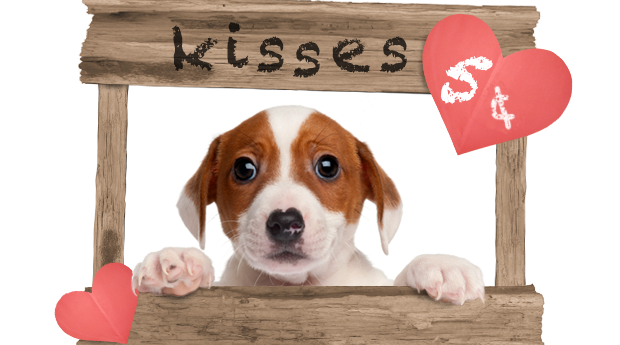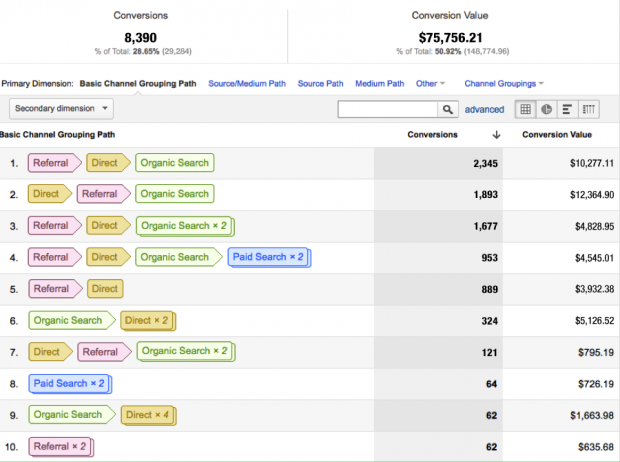The Myth of Direct Response Marketing

Direct response marketing doesn’t work. In fact, it doesn’t really even exist. Many marketers have suspected this for years, but haven’t really had the analytical tools to back up this sentiment.
Now, I know many will argue with this post and this assertion. There are probably litanies of “success stories” that showcase amazing direct response campaigns. But they’re all BS.
We don’t exist in a vacuum. There can be a direct response component to a larger campaign, but too often we hear clients (and less savvy marketers) say, “let’s just focus on direct response.”
Really??
Direct Response, Debunked
Imagine you’re walking down a busy street passing random strangers as you go. Now, imagine that I ask you to create a direct response campaign to get engaged.
So, you randomly ask passersby to marry you. Think you’ll get any takers? Okay, maybe marriage is a tough task. How about just a kiss? Still no luck?
Now, contrast that with trying to get the same response from a loved one. I bet you can pretty much kiss your significant other any time you want – assuming it’s in an appropriate time and place.
What’s the key difference? It’s obvious - you’re already in a relationship.
That’s why direct response seems to work; because you’re in a relationship, even if its just semi-casual. Why does the direct response darling email marketing work?
It does and it doesn’t. It’s awful for consumers at the beginning of the Buyer Journey. But if they already have a relationship with your brand, especially if they’re already customers, email marketing can be powerful.
However, if you’re emailing strangers (or those at the beginning of the Buyer Journey – in the Awareness stage), email marketing underperforms. It’s like asking for that kiss from the random stranger.
Buyer Journey
Marketing is a lot like relationships and dating. You have to communicate. You have to deliver the right messages at the right time to the right people. Just like in dating, there is always a decision cycle.
The Buyer Journey / decision cycle varies by product or service. It also varies based on cost, competition, and whether the purchase is a high or low consideration decision. However, there is always a journey.
In dating you typically go from a casual conversation, to asking for a date, to not-too-serious dating, to actually dating, to engagement, marriage, etc.
Each step takes its due time. You can’t go from asking for the first date to marriage in one step. (Maybe you can, but it’s not advised.)
The same goes for marketing. I’ve given this example many times, yet people will still debate me.
Conversion Path Analysis
We’re one of the leading digital marketing firms in the southeast, and we rarely see single-interaction and/or one-medium paths -- at least not any of substantial volume.
Below are two examples of conversion paths analysis from two very different clients.
The first is an example of a high consideration, long sales cycle product set. Notice the variety in the channels. This is very common and shows the complexity in the buyer journey.

Next, is a low consideration, short sales cycle product set. Now this should be where Direct Response shines, right? Wrong – notice how the channel variety isn’t as robust as in the previous example, but you also don’t see any conversion paths with just a single interaction.

Why aren’t there any single interaction conversions? Because they don’t exist. Not even if a product is given away. Another story I like to tell to illustrate the power of brand and the myth of Direct Response goes as follows:
Imagine a soft drink company sets up shop in your office parking lot. They’re playing cool music with a sign – “Free Widget Cola”. Would you go over and get a free Widget Cola? You’ve never heard of the brand before. You’ve never seen their sleek looking silver can. Would you drink the mystery cola? It’s free, but you’re busy. You’re heading back to the office with stuff to do and you just can’t take time to drink something that will probably taste bad anyway.
Ever watch how many people bypass most free snacks and drinks at the grocery store? Almost everyone - right?
Now contrast that with Coke doing the exact same thing.
Coke just set up shop in your office parking lot. They’re playing cool music with a sign offering free Cokes. Would you go? Substantially more people would.
Why? Because you know the Coke brand. You trust it. You have a relationship with it.
Convergence and Assisted Conversions
So if Direct Response doesn’t exist, what’s left for marketers to hang their hats on?
It’s called Multi-channel Attribution, and it encompasses nearly the entire digital Buyer Journey – painting a much fuller picture of a user’s conversion path in order to determine how your digital efforts work together to drive conversions.
It’s not perfect – we still can’t measure most offline or cross-device interactions (although Google is making progress on this). But in a digital world, Multi-Channel attribution is by far the most effective way to make sense of the Analytics data that we do have.
Attribution Models
It’s all well and good to say that Direct Response doesn’t exist, and that Multi-Channel Attribution is the only way to effectively optimize your campaigns, but how do you do it? How do you determine how to distribute credit across all touch points that assisted in a conversion?
There are several Attribution Models to choose from, each with its own merits and flaws. The key is choosing the right model for your product and unique Buyer Journey.
Last Interaction

The Last Interaction model gives full credit to the last user touch point prior to conversion. It’s helpful in the sense that it emphasizes the final marketing effort that was able to encourage the user to purchase, but the problem is that this model gives zero credit to any marketing efforts that may have come before – thus feeding the myth of Direct Response.
For that reason, we don’t recommend Last Interaction modeling for anyone in 2013.
First Interaction

The First Interaction model is the polar opposite of Last Interaction – giving 100% of the credit to the first marketing touch point, regardless of the final conversion path. It places an emphasis on brand awareness, but completely ignores the majority of the Buyer Journey.
This is an incomplete model and is, quite possibly, more destructive than Last Interaction.
Linear

The Linear attribution model distributes equal credit to every touch point in a conversion path, regardless of the order of or time between events. Google suggests that this model is best for campaigns that attempt to maintain contact with users throughout the sales cycle.
I would recommend a Linear model for products with a long sales cycle, where the direct relationship between touch points is less clear. Linear can also be helpful for those that don’t fully understand their customers’ Buyer Journey just yet and don’t want to risk minimizing a critical piece of a given campaign.
Time Decay

For marketers that want to emphasize the final touch point before conversion without discounting the rest of the Buyer Journey, the Time Decay model serves as an effective alternative to Last Interaction. This model distributes conversion credit across all touch points, with events that occur farther from the conversion receiving less and less credit.
Time Decay is most appropriate for low consideration purchases, where the right promo or message can encourage a user to buy at a moment’s notice.
Position Based

Position Based attribution modeling gives marketers the most customization of any model – allowing them to assign credit to touch points based on position in the customer Buyer Journey. One effective technique is to weight the first and last touch points most heavily, emphasizing initial awareness and the conversion catalyst.
This may be the ideal attribution model for marketers that have a strong understanding of their Buyer Journey. The customization options allow you to decide for yourself which touch points are truly most important.
Other Models
Google Analytics also offers models like Last AdWords, which can be helpful for PPC heavy campaigns, and Last Non-Direct, which is the default attribution model. These models have their uses, but still tend to ignore the majority of the Buyer Journey. For that reason, we prefer the models noted above.
Conclusion
As the Coke example above illustrates, the only way Direct Response can work is if there’s a pre-established relationship between brand and consumer. Multi-Channel Attribution is how we measure that relationship.
There’s more that goes into it, of course, including assisted conversions from social media (which are harder to measure). But the key to effective digital marketing is understanding your company’s unique Buyer Journey, choosing the attribution model that works best for you, and taking an integrated approach to optimizing all touch points along the way.
We don’t live in a vacuum. We shouldn’t analyze our marketing efforts in one either.

Comments
Add A CommentThanks for sharing the myth of direct response marketing. Great insights here on the conversion path analysis.
The author of this post clearly doesn't get the direct response concept at all. And I will use the marriage thing as an example.
Sure, if I go around randomly asking people to marry me, I'd be seen as a crazy, lonely man and people will back away from me. But, If I do RESEARCH on single people looking to get married, and I familiarized with what they are looking for that I can offer, then my chances of getting phone numbers (Leads) and marriage proposals (sales) would be much higher.
Direct response is about knowing EXACTLY who you are selling to. What do they need, want or love? And how can you give it to them? If you know and understand the market, direct response marketing is as effective (if not more) as any other marketing philosophy. If you don't know your market, then it's a worthless approach that won't produce anything.
Research: that's the key.
This article starts out with a great teaser but after reading it I know that the author has a very limited understanding of how real direct response marketing works. Maybe this clearly is your opinion, but it's BS. The example of walking down the street and asking for a kiss is great except where's the offer dummy? Your response rate in a DRM campaign is always going to be directly proportional to the perceived value of the OFFER. The offer is preceded with a GRABBER, and followed up with a TEASER, and then the OFFER and finally the CALL TO ACTION. So if I'm walking down the street and I tell people, "Hey would you like to make a quick stack of cash?" that's the teaser. They stop, and then I say "I'll give you $50 right now if you're interested in hearing more." now I've TEASED them....and then the OFFER is "If you kiss me, I'll give you $50"...then I pull out $50 and say "Ok plant one right there...". Done. Some will accept, and some won't but the beauty of some mediums/marketing channels is that if they don't bite at $50 you can make them another OTO (One time offer) if they go for it, say $100. I'm not married to any one channel or method, I just go where the campaign needs to go in order to achieve ROI. Content marketing and conversion/scoring etc along the customer conversion journey is great, that works too in many cases. I've spent two and a half decades on the front lines of direct response marketing (across multiple channels both print & digital) and we run campaigns all the time across many industries and achieve ROI without the long drawn out process of branding. And since you were using email as an example, 3rd party email campaigns are a waste of time so I agree you're not going to see much conversion there. But if you're combining things like mail, social media and then email that's still direct response marketing, but it's more omni-channel or multi-channel as some like to call it. I still disagree though that DRM is "BS" based on a single touch campaign. We do it all the time, week in and out for some of the largest banks in the U.S. We currently mail 1 time for over 9100 branches nationwide, 5 days a week and the ROI is ridiculous, but then again so is their offer. :)
I mean thanks for the long article but the reason it's incorrect is because you don't really understand what Direct Response Marketing is.
Measuring the effectiveness of a campaign through certain touch points (i.e. Clicks, Leads, Sales) IS Direct Response. So if you're doing that then you're participating in Direct Response Marketing.
While looking for definition of Direct Marketing I came across this web site. And my experience, over twenty years, is that emphatically, Direct Marketing WORKS. (Note my experience is primarily utilizing DRTV backed up with the web, and yes there are issues, and now with the growth of the web, more than ever. But if you have a product and know what you are willing to pay for a consumer that buys (capturing those who do not buy to be subsequently marketed to , and you work to develop an effective, trackable, plan - you can be a highly successful Direct Marketer. I have proven this! One of the biggest Direct Marketing challenges for DRTV advertisers today is attributing DRTV to Web, basically understanding how the two work together. But this also can be done. First, it is essential to incorporate a CRM product into your marketing (I most recently utilized Microsoft Dynamics CRM) to capture, collect data, overlay data, and analyze the data you have collected. This allows you to determine the path to purchase, determine your most profitable customers, and develop testing scenarios. Second, we do not ever just use "last touch"" or "first touch" as Brian suggest everyone does in his article. World Class Direct Marketers have become the most sophisticated users of data in any part of marketing. In 2013 I had a $50 Million Direct Response budget utilizing DRTV, Print Direct Mail and the web (e-mail, SEO, SEM, all forms of internet marketing). I generated over 750,000 Calls (using over a thousand unique toll free numbers for precise tracking) along with delivering 3.2 Million visitors to our web site. And we are made money! There is much more to share and if you want more you can email me johnmnkeck@gmail.com but simply know the Direct Marketing WORKS.
John Keck
If you're asking people cold to try something that would be problematic. But if you're desired event is them to say I'm interested in what you're saying, then you progress to an appointment once they're "qualified" to work with you that's how I understand and want to use direct response marketing.
If your analogy is flawed, my grammar is bad. Excuse the "you're."
Thomas
You're analogy is flawed. In your dating example, obviously the first metric you would measure is stopping someone and getting their phone number. Not asking for a kiss or marriage. The # is the start of the relationship. Now, can you measure the acquisition of a new phone number? Yes. It's not a sale, but it's a lead. It's measurable, and that's direct response.
Ted, thank you so much for taking the time to read and comment. Just to clarify the post and my point of view -- it was really aimed at those who think direct response is a stand alone initiative.
I consider 'Direct Response' to mean a campaign meant to drive one ultimate goal with a single touch point -- ie an email blast to trigger conversions.
That is a practice that I take issue with. It seems that you use the term to describe a campaign with multiple touch points, wherein the "response" is actually moving the user along to the next stage of the Buyer Journey. But that's not typically what I think of as a Direct Response campaign. I consider that to be an integrated marketing campaign.
I hope this helps clarify my position. Thanks again for your insight!
I think you are WAY oversimplifying direct-response. Direct Response is not simply attributing a conversion event to the last touch-point. I agree that this method is flawed at best. I also agree that trust plays a significant part in getting a conversion event to happen (its why brand works so well in search). However its still direct response, as long as you are measuring and managing to performance metrics, regardless of if you give credit to one touch-point or multiple touch points for the conversion. Multi-Channel Attribution IS direct response marketing, because it allows marketers to optimize into the most efficient channels & placements, be it on the assist level and the direct-conversion level.
Good DR marketing measures the effect (both in terms of both direct conversion & assist value) of every touch point along the journey - and most importantly the cost of each touch to determine the relative value of all touches. In addition, good DR allows marketers to TEST all facets of your marketing, including creative messaging, media mix allocations and offers.
Failing to measure & optimize is considerably flawed because you can't know the real value of of your efforts. Direct Response is a strategic approach to marketing the allows marketers to measure and test to improve results, to get the most bang for the buck, so to speak. In this day & age where we have so much data available to tell us what works & what doesn't, the question should be: why isn't everyone a direct marketer?